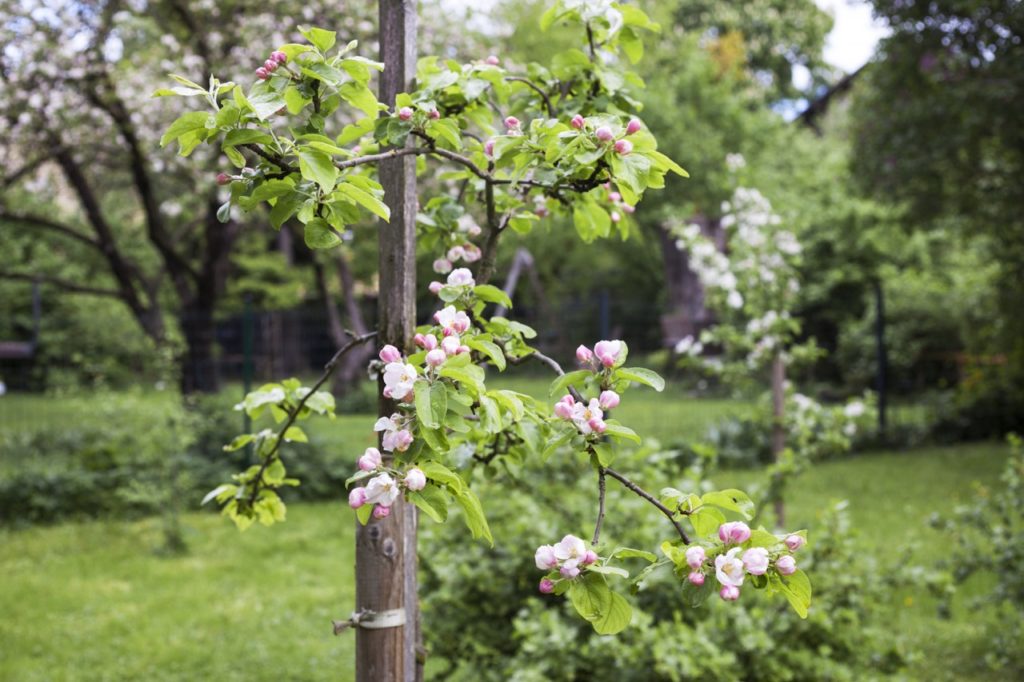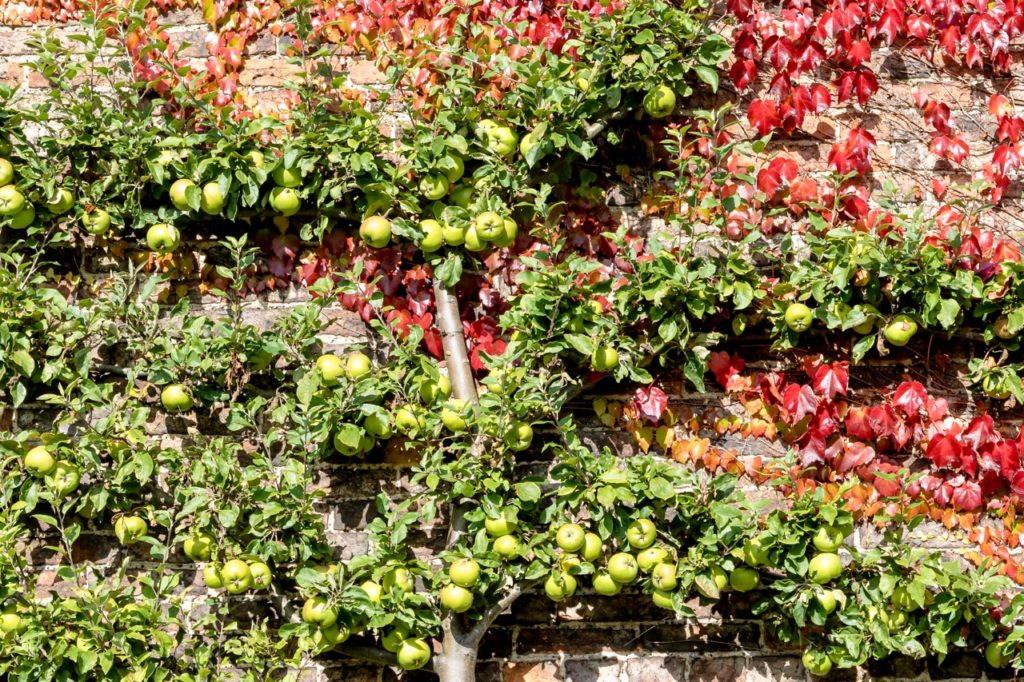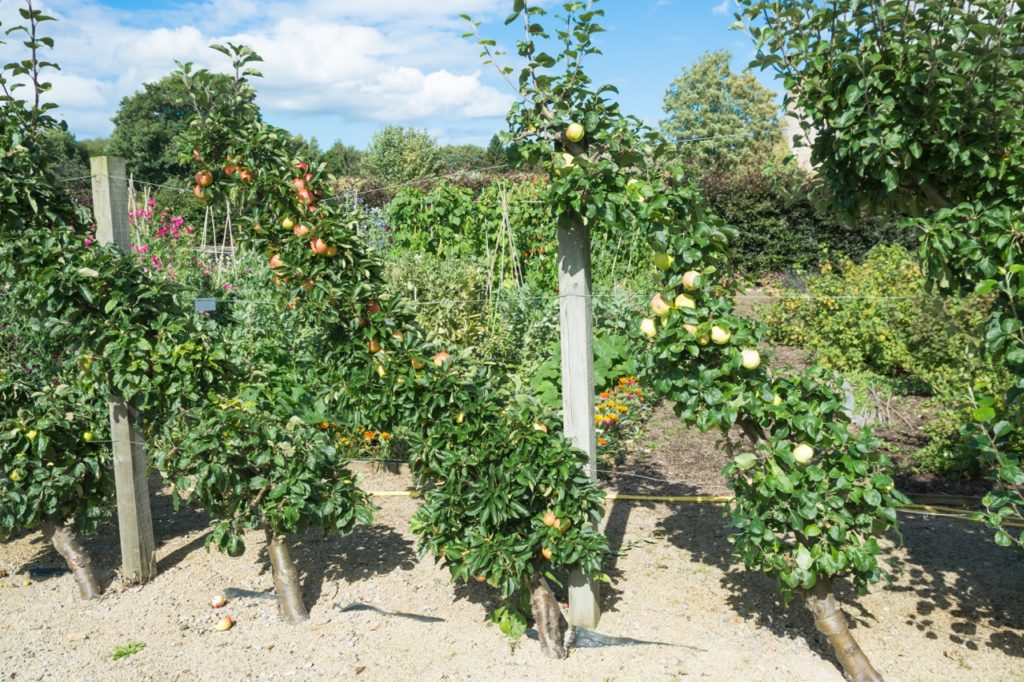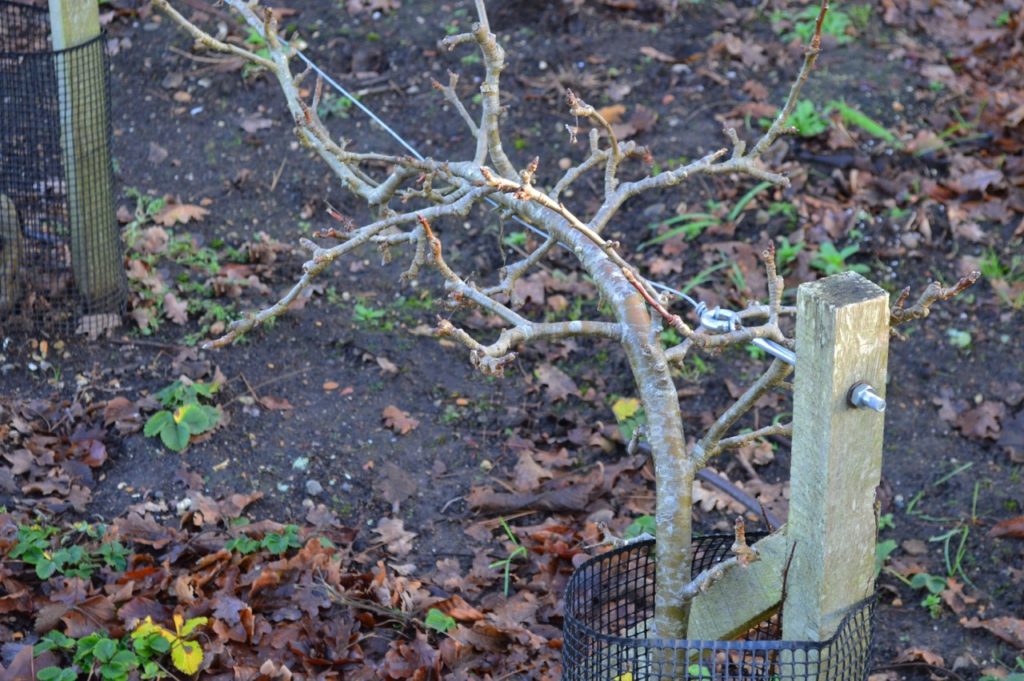FRUIT > APPLES > preparation
IN THIS GUIDE
APPLE TREE GUIDES

Brown LeavesCommon ProblemsContainer GrowingCurled LeavesCrab ApplesFeedingHarvesting & StorageNot FruitingPruningSelf - PollinatingTrainingTransplantingVarietiesWoolly Aphids
Apple trees are one of the best and most mutual fruit to grow in UK gardens .
Versatile and bouncy , they can line up a place in many garden .

If you are considering farm an apple tree where you endure , one crucial matter to consider is what frame you would like your tree to take .
orchard apple tree tree can be grown as standard Tree and are commonly grafted onto different - sized rootstocks that regulate their size of it and vigour .
you’re able to choose to grow a taller apple Sir Herbert Beerbohm Tree or one grafted to a dwarfing or semi - dwarfing rhizome that will end up little in size of it .

As well as turn apple trees as standard - form trees , it is also potential to train apple trees into different shape .
Apple trees lend themselves to cultivation even in smaller place because they can be condition to grow into space - saving and much more summary forms than those into which they would naturally grow .
“ Do some initial pruning over the first few years , to form your tree to a desired shape , ” articulate Julie Bellemann from Sheffield Fruit Trees .

“ If you do this in the early year , it will be easier to prune once it is more accomplished .
“ If you have very little distance , look into ways you’re able to train your tree . Against a paries , fence or in a large pot are the best option . ”
When it comes to the training and backing of apple trees , there are , in fact , 5 main options :

Read on for a lilliputian more information about each of the unlike growing form .
Training & Support For Standard Apple Trees
If you are letting an Malus pumila Sir Herbert Beerbohm Tree grow in its realistic form , you will not require to worry a vast amount about training and support for your Sir Herbert Beerbohm Tree .
However , it is often a salutary estimate to add a post when ab initio embed your orchard apple tree Sir Herbert Beerbohm Tree .
This will not typically be necessary if you are imbed a low Sir Herbert Beerbohm Tree but can be good if you are planting a taller variety that is more top - hard .

Depending on the specific situation and tree , single staking , double staking or angled staking may be utilitarian where necessitate .
1) The Espaliered Form
When it comes to shaped forms for apple trees , the espalier is one choice to think .
Espaliered trees are train and supported against a flat airfoil with a key trunk and several series of horizontal ramification spreading out to both side .
Espaliered trees are generally trained to grow along horizontal wires affixed to a wall or fence .

“ I see espalier trained Malus pumila to proffer the best option for a little garden , producing a ripe harvest once make in a modest tread , ” shares Master Horticulturist Colin Skelly .
“ They are also a great option for allotments or kitchen garden , permit them to be train against walls or fencing and freeing up space for other crop . They also look neat ! ”
These should be space around 35 - 45 curium aside and the lowest one should be 40 cm above footing floor .

A single - stemmed tree diagram or partially pre - train espaliered Malus pumila tree is then order and tied into the supports .
Side stems are tied down to the horizontal living conducting wire as they grow and all unwanted shoots are clip back to just 2 - 3 leaves .
2) Pleached Apple Tree Support
Pleached Malus pumila tree diagram are trained to have a long bare root at the base , with branches spread out horizontally on either side of a cardinal leader above a sure superlative .
This is a variation on the idea of an espaliered apple tree , but the space below allows igniter to come through , while perhapsenhancing the privacy in a particular part of a garden .
These are trained in much the same path as an espaliered apple tree , but , of form , a longer bare trunk at the base is maintained .

These are often purchase as pretty mature apple trees that have already been trained to give a nigh - instant impact .
3) Fan Training Your Trees
Fan - trained apple Sir Herbert Beerbohm Tree have a short tree trunk and a serial publication of branches that radiate out like a sports fan above the aforementioned trunk .
This shape is often used up against a bulwark or fencing in a garden to make the most of the space available .
Apple Tree are good buff - trained in late winter or former spring before their buds open .
For fan training , orchard apple tree tree with semi - dwarfing rootstocks are best .
Again , devotee are trained to a series of horizontal wires on a bulwark or fence , though in this showcase , the wires should be around 15 cm asunder .
The initial training involves a specific serial of steps involving tying in and pruning , which all depend on whether you are begin with a one or two - year - old tree diagram .
Apple fans are pruned in former summer , unlike most apple which are pruned in the wintertime months .
This deters the re - ontogenesis of unwanted stem turn and encourage the formation of yield buds .
The aim is to evolve a system of short - fruit spur on a well - established model of branches through pruning .
4) Cordon Apple Trees
Another choice is to civilise apple treesinto exclusive tall and narrow perpendicular cordons .
educate an orchard apple tree tree as a cordoninvolves allowing a single main growing stem to get , with short fruiting spurs to either side .
Cordon apples are often develop on a bulwark , fencing or other support structure at a 45 ° angle , though they can also be grown vertically or coach to meet and form an archway or tunnel over a pathway , which can make an exceedingly ornamental feature for a garden .
Cordon orchard apple tree can be check from clams or purchased pre - coach .
“ retrieve about the sizing of your garden and how big you’re able to let your tree diagram turn , ” explains Julie .
“ Trees on vigorous rootstocks can easy grow 4 - 6 m tall and encompassing , but by choosing more shadow blood line you could operate this tiptop and keep it smaller , perhaps by grow it along cordons . ”
A dwarfing rootstalk on a gad - comportment is typically used when orchard apple tree Sir Herbert Beerbohm Tree will be trained in this mode .
These trees will call for lasting support and must be pruned cautiously and correctly to maintain their shape and size .
The thought is to have a undivided main growing prow with unretentive fruiting spurs along the sides , allowing the orchard apple tree tree to retain a very compact and space - saving form .
5) The Step-Over Form
One final option is to discipline apple trees into a stair - over form so that they form small hedge or bed edging that is only around 45 - 60 cm in height .
This var. is like the lowest tier up of an espaliered apple tree , without any of the higher horizontal branches .
It will look great around the edges of a veggie patch or cut bloom beds in many gardens .
A low support structure is create and branches are groom out sideways from a short upright stem along telegram suspend a brusk length above the ground .
Any outgrowth trying to grow higher should be cut back to keep everything growing lowly to the basis .
Understanding the dissimilar shipway in which apple tree can be trained and fend for as well as the unlike options that are on crack should make it clear-cut just how various these trees can be and how space might be set up for an Malus pumila tree of some kind in almost every garden .